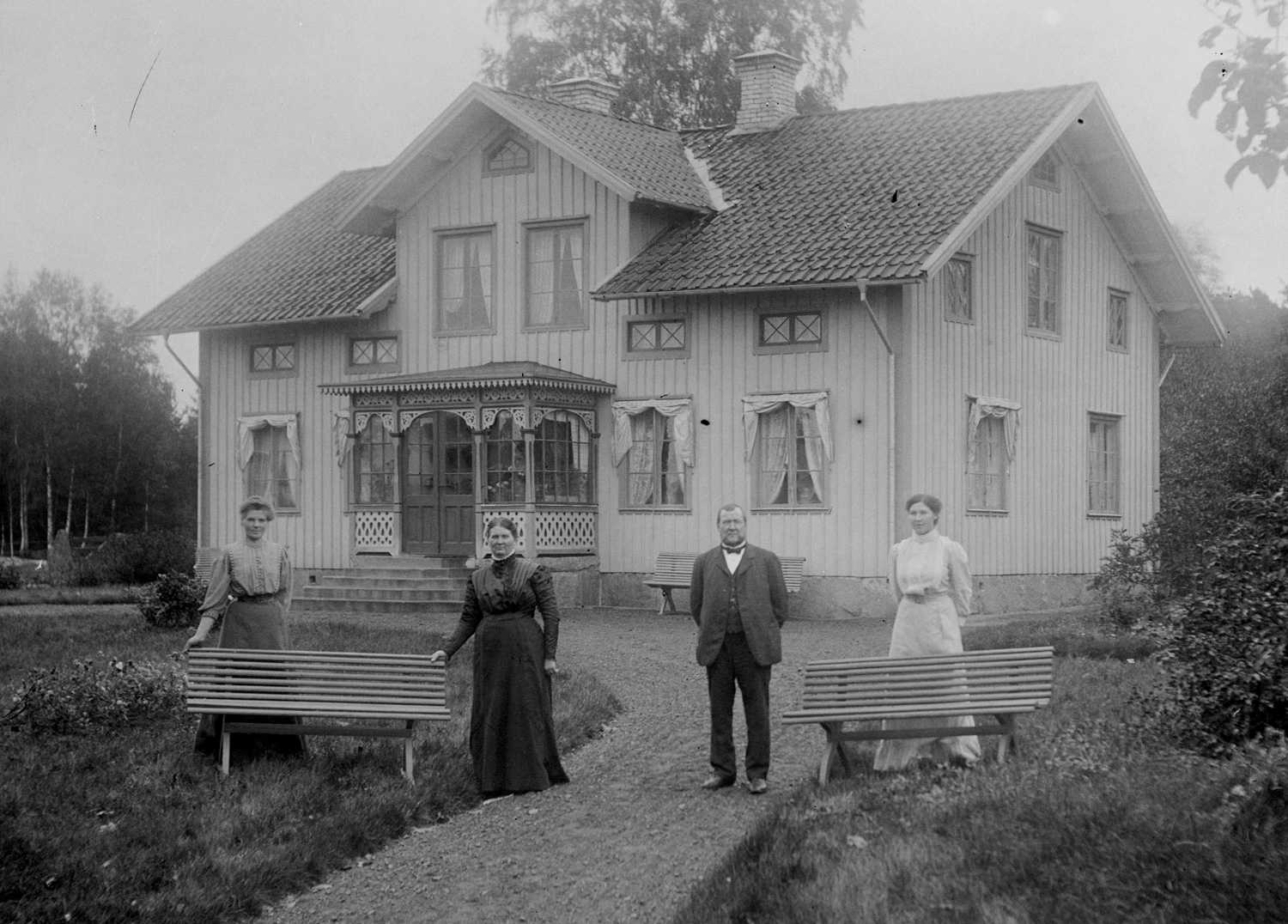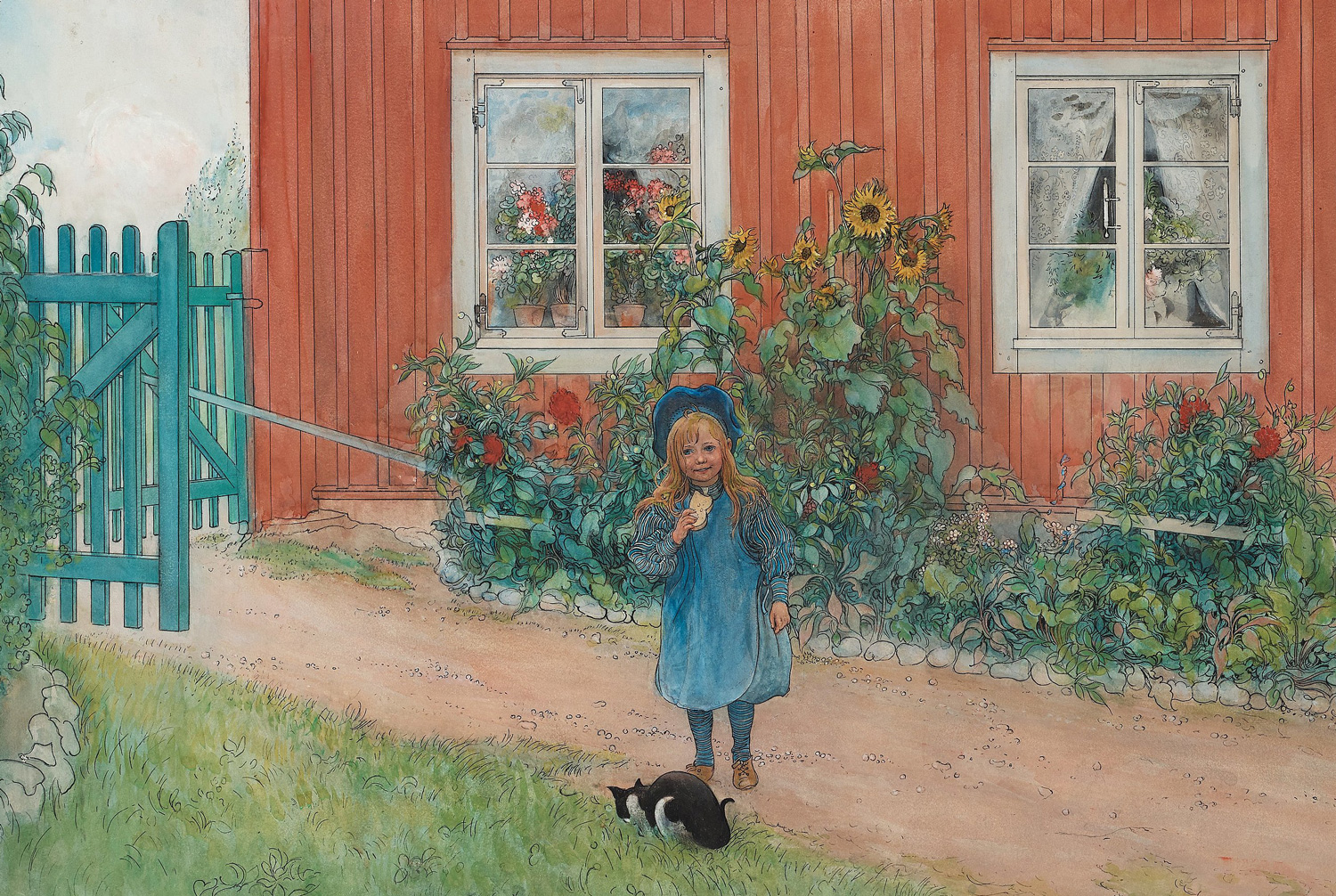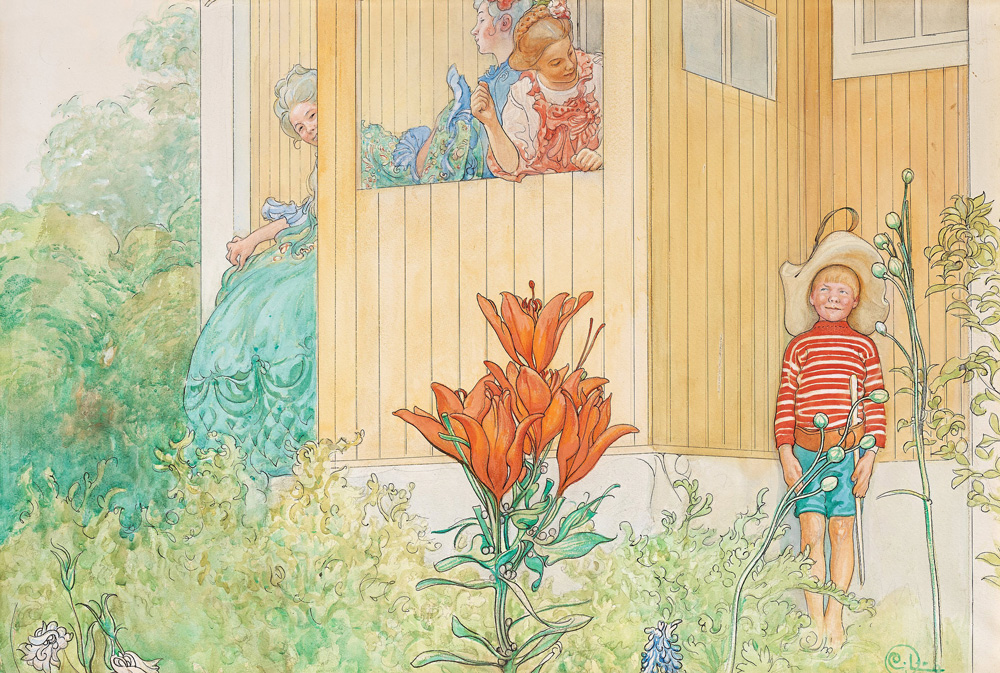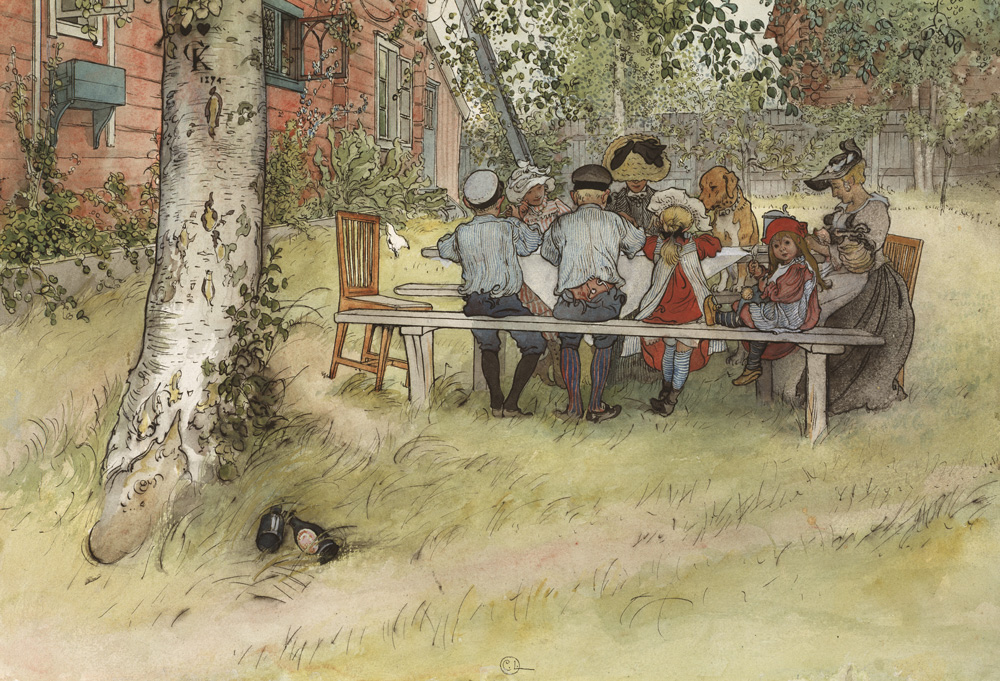THE TURN-OF-THE-CENTURY GARDEN – A PLACE FOR COUNTERREACTION

THE TURN-OF-THE-CENTURY GARDEN – A PLACE FOR COUNTERREACTION
Carl Larsson’s images of his family’s playful life in the greenery sparked a revolution. Compare them to the photographs of the time, often featuring upright families with rigid expressions. And don’t forget to notice all the beautiful, period-typical flowers!
Dreaming of Peonies and Bleeding Hearts
Do you dream of peonies and bleeding hearts, romantic gravel paths, and coffee chats in a leafy arbor? Just as at the last turn of the century, many of us long for a charming and beautiful garden to enjoy and relax in. More than that, we want to reconnect with nature—on nature’s terms. It’s a sentiment of our time, just as it was at the beginning of the last century.
Back in the early 1900s, there was a great fascination with nature and the natural, inspiring everything from art and architecture to political movements and people’s outlook on life. These were reactions against industrialization and urbanization, which had driven more people into cramped, unhealthy city living.
Today, we live with the consequences of industrial development, facing climate threats and demands for major changes. Added to this are the lessons of a pandemic. We, too, are reacting by turning to nature for nourishment for both body and soul. We celebrate the organic and natural, with dreams of country cottages and gardening shows filling our screens and social feeds.
Stepping into the Grass
Just like a hundred years ago! Back then, there was no Instagram, but influential magazines spread images of affluent families who had long been accustomed to leaving the city in the summer to retreat to their country homes. They would sit on verandas, gazing out over neat paths and flowerbeds—without risking sunburn or overheating in the layered fashion of the time.
However, a new era was dawning, and many would soon want to leave the city year-round and step down from the verandas into the grass itself!
The Rebels of Sundborn
These families, along with many others, were inspired by pioneers Karin and Carl Larsson. The paintings from Sundborn depicted the Larsson family freely playing and enjoying the outdoors. This seems natural to us today, but it was revolutionary at the time. The Larssons broke many social norms about how socializing and family life should be conducted. There was so much that wasn’t considered proper. But the Larssons paved the way and became trailblazers for new, life-affirming style ideals.
The Essential Arbor
The new outdoor life included a cooling arbor, providing shade from heat and sunburn. It became a green room, often larger than today’s, to accommodate parties beyond the family. Arbors were typically round or square, open on one side, and planted with lilac, linden, elm, beech, or other greenery. To provide shade, the opening was often oriented northward, with a path leading up to the arbor. The interior was usually paved with the same material as the path, such as gravel.
Letting Nature Take Over
Other typical features of turn-of-the-century gardens included circular flowerbeds and border flower arrangements from the 1800s. As the 20th century progressed, there was a growing trend to let nature take its course. Trees were left standing around houses, small “wild” flower meadows replaced formal flowerbeds, and natural height variations and large rocks were preserved. Rock gardens became the foundation for wilder flowerbeds.
Outdoor Furniture Takes Over
Around the turn of the century, outdoor furniture began to appear. Previously, people would simply take out a blanket or a chair when they wanted to sit outside. Now, special and comfortable furniture that could withstand placement on gravel or grass became necessary. Furniture in the style of Carlshaga’s garden pieces became immensely popular. You can now purchase such pieces to bring a unique foundation to your turn-of-the-century dream.
If you have an older garden, there may already be an arbor—or space to create one. However, most Swedish homeowners likely have a garden that was leveled into a sterile, flat lawn surrounded by a low hedge or fence. Does the wild and romantic style ideal of the last century have a place here?
A Garden Designer’s Perspective
We asked garden designer Sandra Nihlmark for her thoughts:
"Yes, why not? There’s already so much that connects past and present. The starting point is the same—we long to be outside! We’re creating more spaces and rooms in our gardens and building larger and more elaborate outdoor areas. It’s clear that we’re not content with indoor living.
This, too, is a counterreaction. We’re deeply influenced by climate concerns, and the pandemic has shown us the consequences of overcrowding. In many ways, we’re arriving at the same conclusions people did a hundred years ago, reacting in the same way. We dream of moving to the countryside, growing our own food, and sharing plants with one another, while valuing our local environment."
Freedom at the Core
We agree wholeheartedly and hope you feel inspired to consider what a turn-of-the-century garden could mean for you. If the core idea is to create a beautiful environment where you can do what you love and feel free—just like the Larssons at Sundborn—why not embrace it?
Tag and share pictures of your garden with hashtags #turnofthecenturygarden and #carlshaga.
Special thanks to Sandra Nihlmark for participating in this article! You can find her at www.sjystarum.se.



